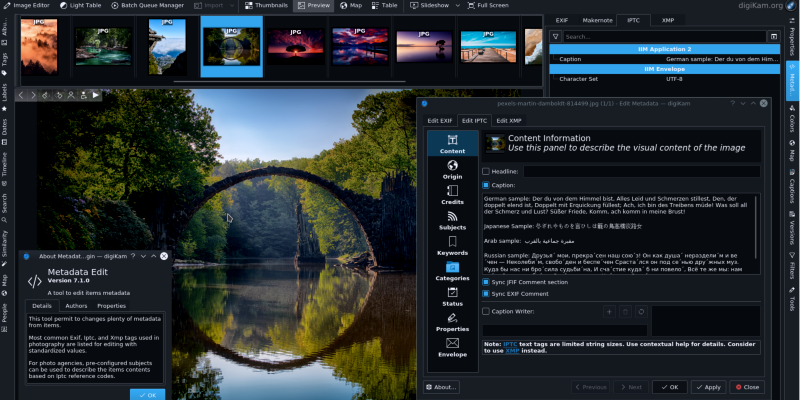
Jpg photos not showing in digikam tv#
The embedded JPEG file is used by digiKam to display RAW image thumbnails or in slide shows, and it can be used for TV display from the camera. It does normally not include an ICC profile. But nothing is lost, read on!Ī RAW file is a container including the raw sensor data, EXIF metadata, and often a JPEG preview thumbnail. The simple reason is that digiKam uses Libraw demosaisic method with linear conversion of RAW data, and if the ICC profile does not include gamma correction and/or tone mapping (most Canon profiles), the result is dark (in 8-bit mode the gamma correction is applied automatically). In 16-bit mode, many are surprised that a relatively dark photograph shows up after RAW conversion with digiKam, even so the ‘ColorManagement’ and ‘RAW Conversion’ options have been meticulously set-up for the intended purpose. Note: a format with better compression named HEIF can be used in place of PNG to gain compression ratio. You could, however rather keep the lossless png files and only create JPEG copies in the moment you want to take your images to the print shop, send them by email or post them on the web. If you are very concerned about storage space, you can do the latter. Should you keep the png-files or convert them to the far smaller JPEG files for storage?. You have now finished editing your photos and are content with the results. So the recommendation is to save any edited files as png. digiKam supports the exif data in png files, whereas (currently) for tiff files, exif data are lost. digiKam understands two of these: Tiff and png. To avoid this repeated loss of quality you should save your edited files in a lossless format. Every time you open a JPEG image, edit it, save the file and close it, the image is compressed and quality is lost. Heavy compression may make the loss of quality visible to the eye. JPEG is a compressed format, whose compression causes loss of quality. Most digital cameras store images in jpeg format on the memory card. digiKam use this embeded image to render quickly the thumbnail without to load whole image. When the thumnails are generated, the ones that fail appear at first and then are replaced by the broken picture icon.Ī: Check if the application generating the file include an IPTC or XMP preview as JPEG. The only pattern I can spot is that it fails on largish files (bigger than 1MB). Q: On all my albums, digiKam fails to generate thumbnails on some images.

If you’re running a Linux distribution that doesn’t set up USB Mass Storage devices automatically, here are the steps you need to follow: Thumbnail generation fails on large files
Jpg photos not showing in digikam manual#
It should be truly “plug and play”: Manual Setup If you have a relatively modern Linux distribution that is pre-configured to work with USB Mass Storage Devices, there’s nothing you need to set up!. How do I use it with digiKam ? The Easy Way! You can checkout the current bugreports and wishlists at these urls Please use the KDE bug tracking system for all bugreports and new feature wishlists. How can I inform you about bugs and wishes? Reporting bugs and wishes If you have still have no luck, i would recommend contacting the gphoto2 people. (See, the FAQ about using a USB MassStorage Camera with digiKam).

Many of the new cameras actually provide a USB MassStorage Device Interface, so that you can access the camera like a hard disk. If your camera is not in the supported list, i would recommend doing some searching around. It makes use of gphoto2 to do camera operations.

My camera is not in the list of supported cameras in digiKam.ĭigiKam doesn’t included any camera drivers.


 0 kommentar(er)
0 kommentar(er)
